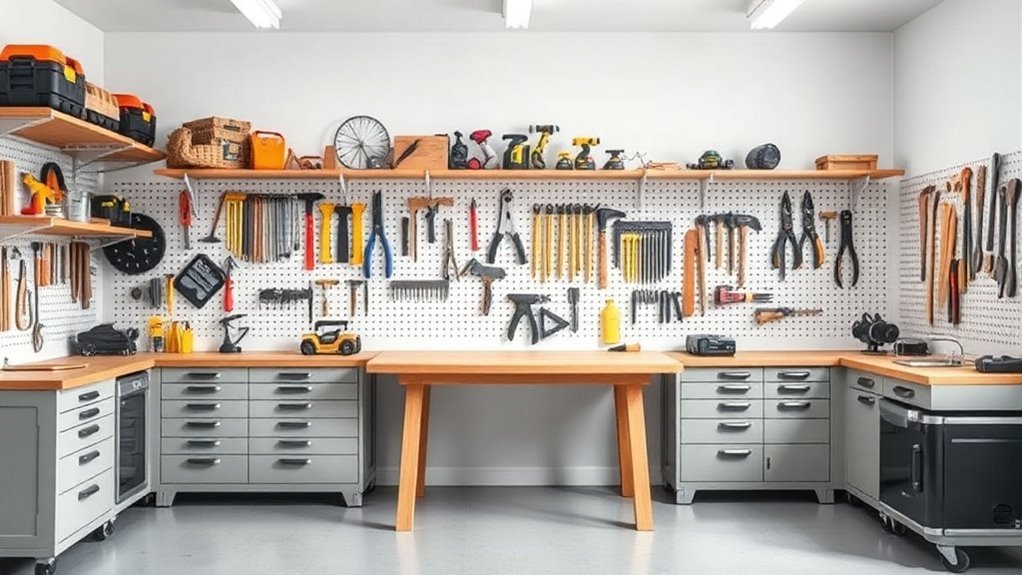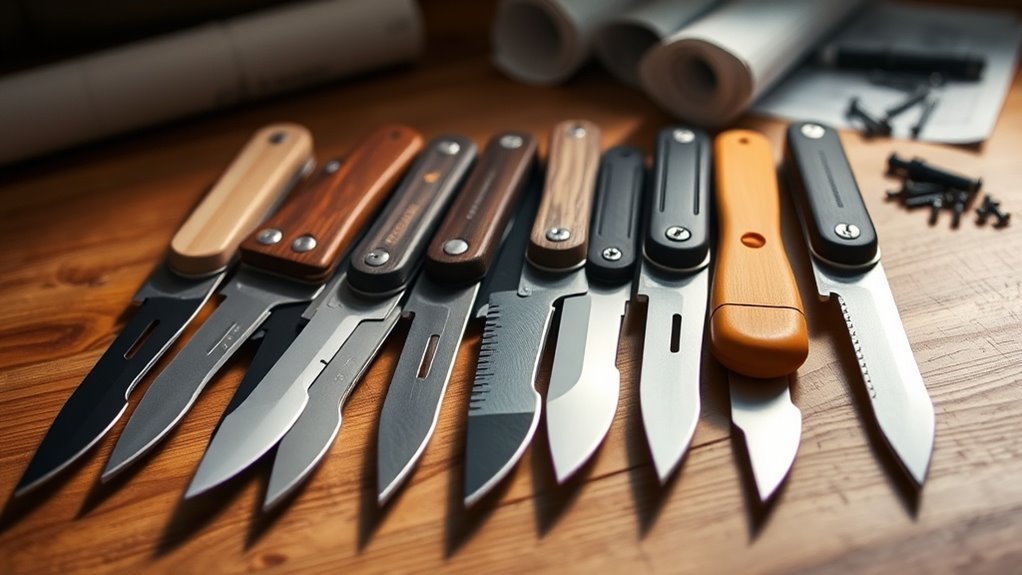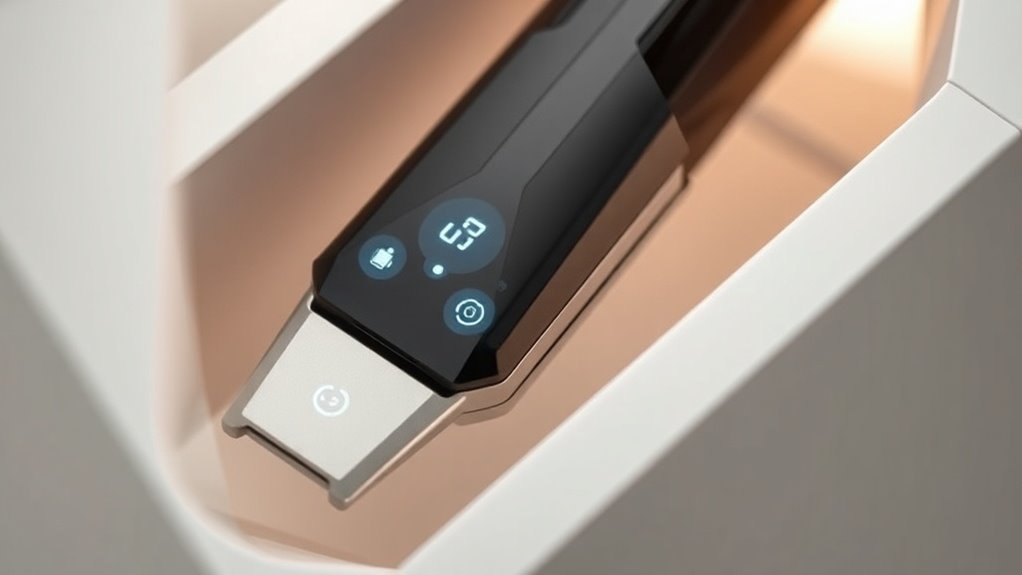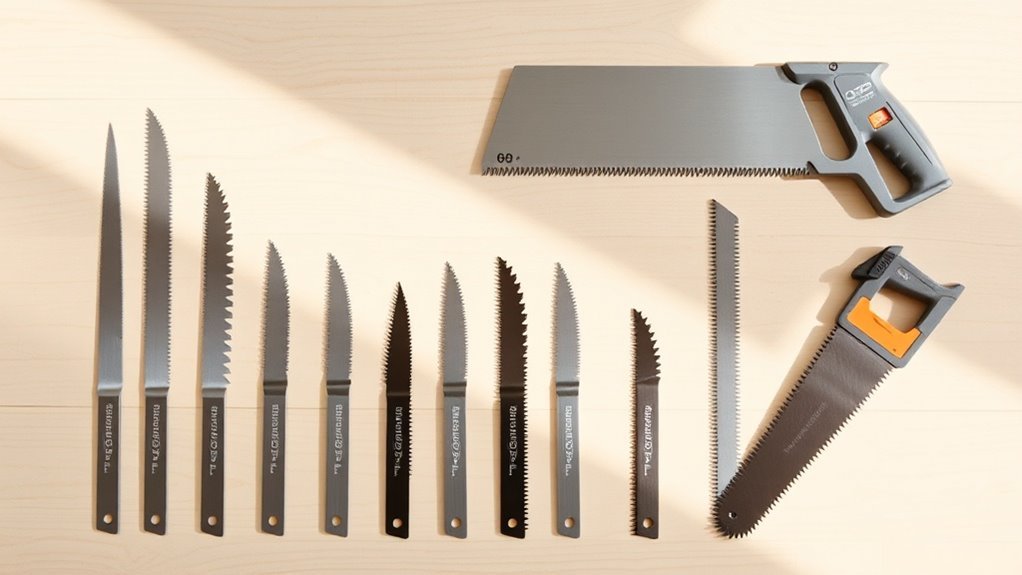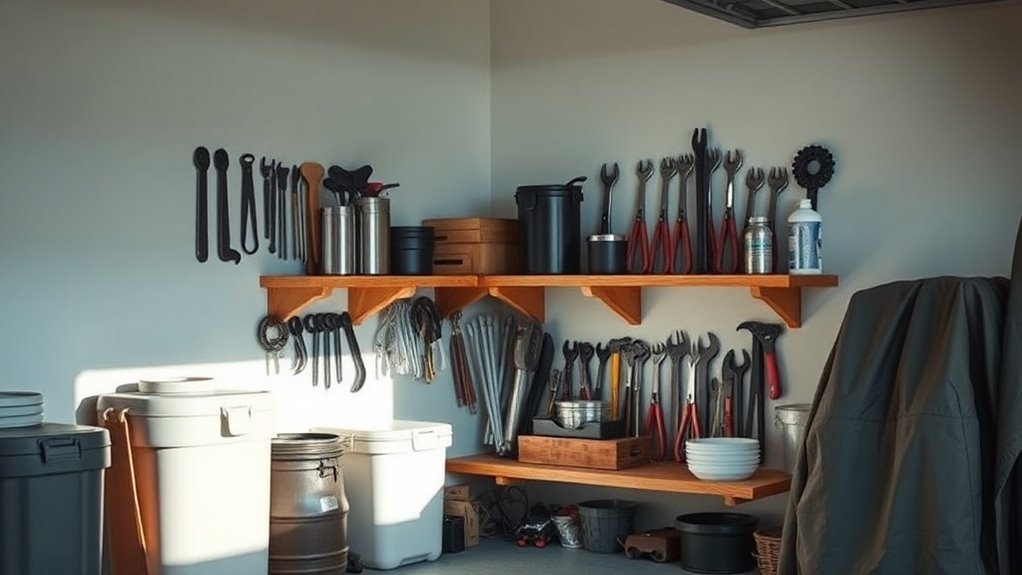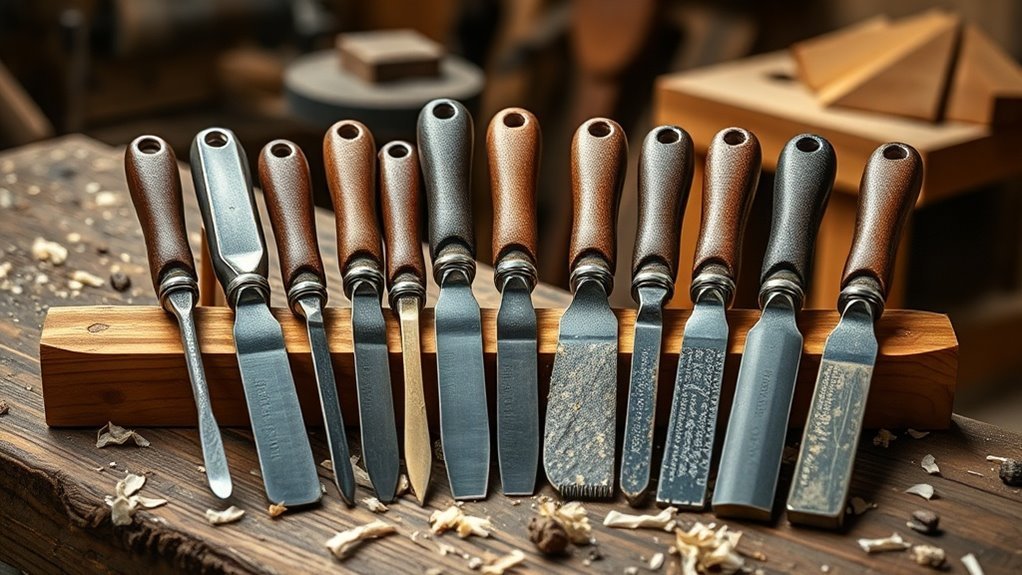How Utility Knives Differ for Various DIY Jobs
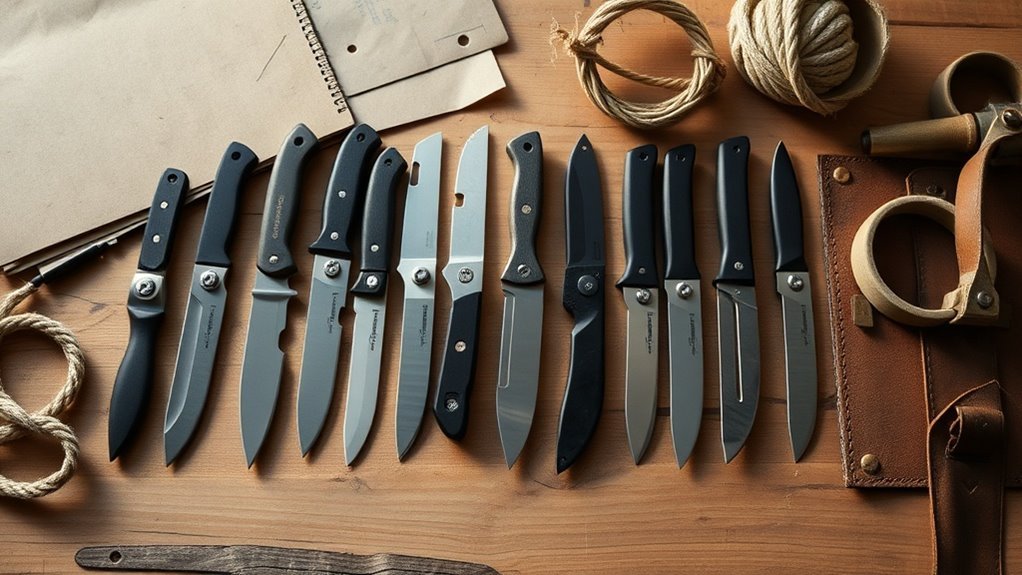
Utility knives differ greatly based on the DIY job at hand. For light tasks like cutting cardboard, a retractable blade knife works best, while heavy-duty jobs with tougher materials require a fixed-blade knife. The blade type also matters; serrated edges grip fibrous materials, and straight blades offer clean cuts on smoother surfaces. Handle design impacts comfort and control, too, making it easier for you to work efficiently. Discover more about selecting the right tool for your projects.
Key Takeaways
- Retractable blade knives are ideal for lightweight tasks, ensuring safety and ease when cutting materials like cardboard or paper.
- Fixed-blade utility knives excel in heavy-duty jobs, particularly for tough materials such as rope or carpet, providing durability and strength.
- Specialty knives, like box cutters, are designed for specific tasks, optimizing performance and efficiency in their intended use.
- The blade material significantly affects knife performance; stainless steel is great for corrosion resistance, while carbon steel is easy to sharpen.
- Ergonomic handles and safety features, such as blade locks, enhance control and comfort, reducing the risk of injury during various DIY projects.
Types of Utility Knives: A Quick Overview
When you’re tackling DIY projects, understanding the various types of utility knives can make all the difference.
There are several styles you should consider. First, the retractable blade knife is common for its safety and ease of use. You can extend or retract the blade based on your needs.
Next, the fixed-blade utility knife offers durability, making it ideal for heavy-duty tasks.
If you’re looking for versatility, the folding knife is compact and perfect for easy storage, while still delivering solid performance.
Then, there are specialty knives designed for specific tasks, like box cutters.
Knowing these options helps you pick the right knife for your job, ensuring efficiency and safety in your DIY projects.
Choose wisely!
Blades: Material and Sharpness Differences
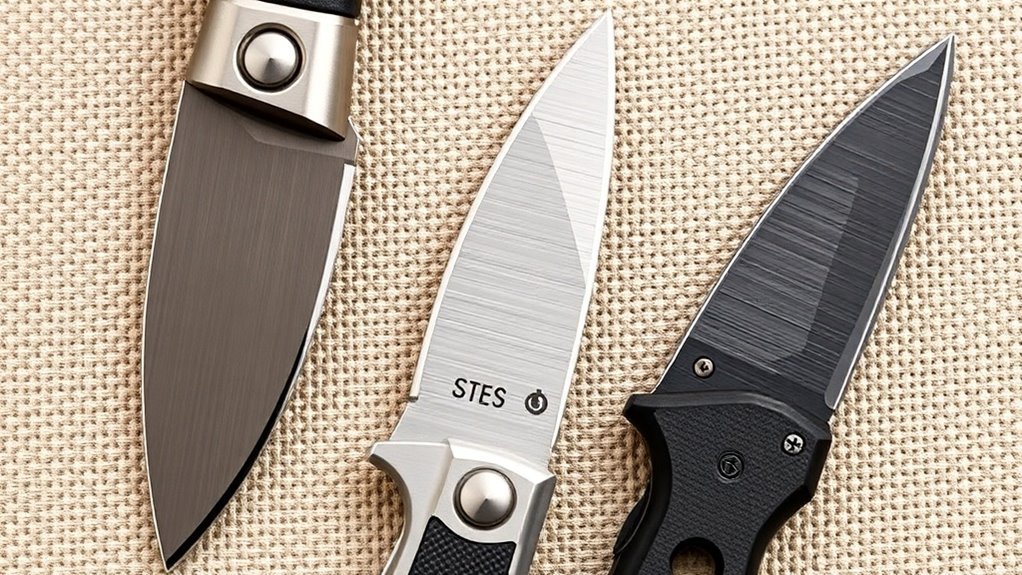
When it comes to utility knife blades, the material you choose can greatly impact performance and longevity.
Different jobs require varying levels of sharpness and edge retention, which means you’ll want to match your blade to the task at hand. Understanding these differences will help you work more efficiently and get better results.
Blade Material Types
Choosing the right blade material for your utility knife can greatly impact your DIY projects. There are different types of materials to evaluate, each with advantages and drawbacks. Here’s a snapshot to help you decide:
| Material | Key Features |
|---|---|
| Carbon Steel | Easy to sharpen, rusts easily |
| Stainless Steel | Resistant to corrosion, holds edge well |
| High-Speed Steel | Extremely durable, retains sharpness longer |
| Bi-metal | Combines strengths of steel types, flexible yet tough |
Sharpness Requirements Per Job
Knowing the sharpness required for different jobs can make all the difference in achieving clean, precise cuts. For light tasks like opening packages or cutting tape, you don’t need an overly sharp blade. A moderately sharp edge will do just fine.
However, for more demanding jobs, such as trimming drywall or cutting through thicker materials, you’ll want a sharper blade that can handle tougher fibers without tearing.
Similarly, if you’re working with delicate materials like cardboard or foam, the blade’s sharpness should be just right—too sharp can cause unwanted tearing.
Always consider the material at hand and what accuracy you need; it’ll save you time and guarantee your work looks polished. Choose wisely!
Edge Retention Factors
While you might focus on sharpness for immediate cuts, the material of the blade plays an essential role in edge retention over time. High-carbon steel blades, for example, are known for their durability but can rust if not maintained.
Stainless steel, on the other hand, resists corrosion but may lose sharpness quicker. Some utility knives feature ceramic blades, which stay sharp longer but are more brittle.
The thickness of the blade also influences longevity; thicker blades generally withstand tougher tasks without deformation.
Finally, how you use and store your knife matters. Regular maintenance, like honing and proper storage, can greatly enhance edge retention, ensuring your knife performs well job after job.
Ergonomics and Handle Design: Comfort and Control
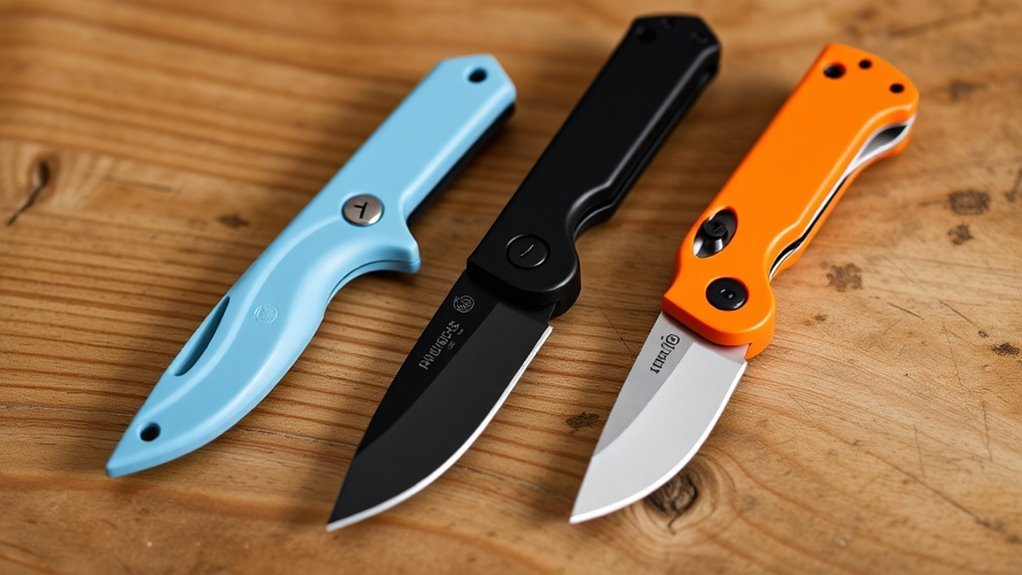
When tackling DIY projects, having a utility knife that fits comfortably in your hand can make all the difference in your precision and control.
Look for knives with ergonomic handles designed to reduce strain during long tasks. Soft-touch grips or rubberized materials provide extra comfort and prevent slipping, ensuring your grip remains secure.
A well-designed handle should also accommodate various hand sizes, allowing you to maintain a natural position while working. This means you can tackle more intricate cuts without fatigue or fumbling.
Additionally, consider knives with an adjustable or retractable blade feature for better handling. With the right ergonomics and handle design, you’ll feel more in control, making your DIY experiences smoother and more enjoyable.
Safety Features: Keeping Your Projects Hazard-Free
Even with the right ergonomics and handle design, safety shouldn’t be overlooked in any DIY project. A utility knife can be a powerful tool, but using it safely makes all the difference.
Consider these essential safety features to keep your projects hazard-free:
- Retractable blades protect you when the knife’s not in use, preventing accidental cuts.
- Blade locks guarantee the blade stays securely in place while you’re working, reducing the chances of slips.
- Comfort grips not only enhance control but also minimize hand fatigue, so you can focus on your task.
- Safety guards shield your hand from the blade’s edge, offering an extra layer of protection during use.
In addition to using safe tools, wearing appropriate safety gear can further reduce the risk of injury and enhance your DIY experience.
Prioritizing safety can make your DIY experience not only productive but enjoyable too.
Blade Replacement and Maintenance: Extended Lifespan
To get the most out of your utility knife, you’ll want to pay attention to blade replacement and maintenance.
Changing the blade regularly and keeping it clean can extend its lifespan considerably.
Plus, proper storage and handling will help you avoid unnecessary wear and tear.
Frequency of Blade Changes
Typically, you should change your utility knife blade whenever it starts to feel dull or isn’t cutting cleanly.
Regular blade changes not only guarantee safety but also improve the overall quality of your work. Here are some tips to help you determine when it’s time for a new blade:
- If you notice jagged edges on the material.
- When you need to apply extra pressure to cut.
- After cutting through tough materials like cardboard or wood.
- If the blade becomes rusty or damaged.
Keeping track of these signs can extend the lifespan of your utility knife and enhance your DIY experience.
You’ll find that changing the blade often leads to neater cuts and a more enjoyable project!
Proper Cleaning Techniques
Maintaining your utility knife isn’t just about changing the blade; proper cleaning techniques play a big role in extending its lifespan and guaranteeing peak performance.
After each use, wipe the blade with a damp cloth to remove dirt, debris, and adhesive residues. Avoid harsh chemicals that could corrode the blade or damage any moving parts. Once clean, dry the knife thoroughly to prevent rust.
Check the pivot point for any grime, applying a small amount of lubricant if necessary. If you notice any signs of wear, you might want to address them immediately.
Regular attention to cleaning not only keeps your knife in top condition but also guarantees safety during use. Overall, a clean knife helps maintain its cutting effectiveness longer.
Storage and Handling Tips
While you might be tempted to toss your utility knife in a drawer after use, proper storage and handling are essential for ensuring its longevity and effectiveness.
Taking care of your knife will save you time and money in the long run. Here are some tips to help you maintain your utility knife:
- Store it in a protective sheath or case to prevent blade damage.
- Replace dull blades promptly to maintain cutting efficiency.
- Regularly check for loose parts and tighten as necessary.
- Keep it away from moisture and extreme temperatures to prevent rust.
Choosing the Right Utility Knife for Specific Tasks
How do you choose the right utility knife for a specific task?
First, consider what you’ll be cutting. For thin materials like cardboard or paper, a lightweight, retractable knife works best.
If you’re tackling something tougher, like rope or carpet, opt for a heavier-duty knife with a fixed blade for added stability.
Additionally, think about the blade type. A serrated blade’s great for fibrous materials, while a straight blade excels with clean cuts.
Consider the material you’ll cut: serrated blades are ideal for fibrous tasks, while straight blades deliver precise, clean cuts.
Don’t forget about comfort; verify the handle fits well in your hand.
Finally, check the knife’s safety features, especially if you’re a beginner.
Choosing the wrong knife can lead to frustration or injury, so pick one that matches your specific DIY needs.
Questions
What Sizes of Utility Knives Are Available on the Market?
You’ll find utility knives in various sizes, typically ranging from compact, pocket-sized models to larger, heavy-duty versions. Each size features different blade lengths, which cater to specific tasks and cutting requirements you might encounter.
Can Utility Knives Be Used for Outdoor Projects?
You’ll be amazed how versatile utility knives can be for outdoor projects! They’re perfect for everything from cutting rope to trimming branches. Just don’t underestimate their power—they slice through materials like butter with ease!
Are There Utility Knives Specifically Designed for Left-Handed Users?
Yes, there are utility knives designed specifically for left-handed users. These often feature ergonomic grips and blade orientations that cater to your needs, making it easier for you to tackle your projects comfortably and effectively.
How Do I Know When to Replace a Utility Knife Blade?
If your knife’s cutting performance starts dwindling, it’s high time to swap that blade. You’ll notice it’s less effective, leaving ragged edges or needing more pressure. Don’t hold onto dull blades like it’s the Stone Age!
What Safety Gear Should I Use When Operating a Utility Knife?
When using a utility knife, you should wear safety glasses to protect your eyes, gloves to avoid cuts, and sturdy footwear to safeguard your feet. Always prioritize safety to prevent injuries while working.
Conclusion
To summarize, choosing the right utility knife really does make a difference in your DIY projects. It’s not just about cutting; it’s about comfort, safety, and efficiency. You’ll find that each type of knife serves a unique purpose, and understanding their features can transform your experience. So next time you’re ready to tackle a task, remember: the right tool can elevate your work and keep you safe, turning theory into a practical reality in your hands.

